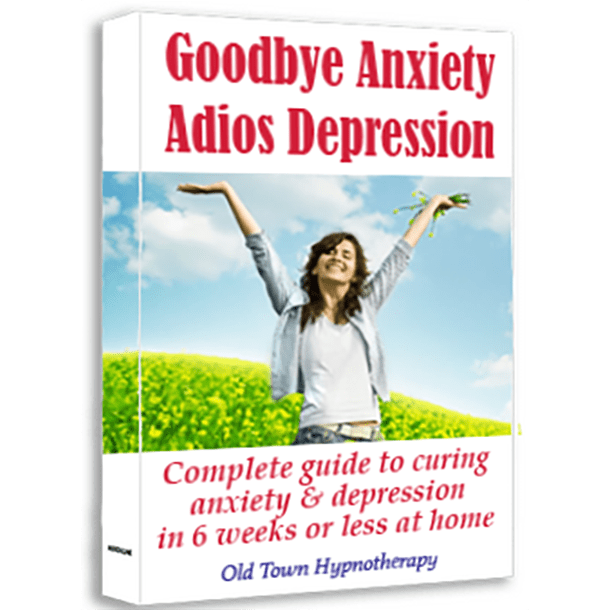I was asked recently to write a blog post on Agoraphobia – if you’ve not heard of it before official definition is “extreme or irrational fear of open or public places”
So we know what agoraphobia means, but what actually is it and how do you get it?
Agoraphobia is often also described as a specific fear and the term ‘phobia’ would also suggest specific fear and it can be identified as the fear of open or public places. But it is NOT a specific fear or a phobia at all, it is a symptom of a general anxiety disorder. An extreme symptom, but it is a symptom, let me explain:-
How does agoraphobia develop?
Part of your brain called the Thalamus has the job of sorting and filtering input from all your sense – your eyes, ears, touch, smell and taste, and works with various other parts of the brain (we don’t need to be concerned with the specifics right now). You can understand that when we are bombarded with millions of bits of information every second, we would go a little bit crazy if had to be consciously aware of everything we’re exposed to, so there is a whole team in our brain’s ‘sorting office’ filtering information as it comes in and either discarding it, storing it in your subconscious, sending it to other parts of your brain to deal with or bringing it to the attention of your conscious mind.
Thanks goodness this all goes on subconsciously – wouldn’t it be exhausting if we had to get involved?!
As your anxiety levels rise and allowed to continue to rise unchecked, the Thalamus starts to raise the internal threat level. Imagine that you are relaxed, happy, calm, in control and just in the moment and getting on with life – your threat level is green. But as anxiety increases, this might rise to an amber alert and eventually red alert.
As the alert levels rise the Thalamus starts filtering more and more input information to the Amygdala – the be we refer to as being responsible for the flight fight responses in your body and mind.
It’s a bit like your General Manager going to your Defence Director and saying ‘I think you need to be aware of this, it might be a threat’ and then the Defence Director, makes a note of it and tells the Thalamus to keep an eye out for more of the same until it’s satisfied it’s safe. The General Manager sends more potential threats and the Defence Director raises the threat level a notch resulting in the General Manger widening the scope of what it perceived to be a threat even more raising threat level rises even further. Gradually going from green, to amber to red alert.
From red alert, the next step is flight, fight or freeze – or Panic Attacks.
Panic attacks occur as the stress bucket overflows (see Living With Depression is Rubbish). It’s basically when you can’t take any more and your flight/fight response takes over.
This is when agoraphobia can start to develop for some people.
Lets suppose you are in a supermarket, you’ve had anxiety for a while and your internal threat level has been gradually rising so that you are now in red alert most of the time. Unbeknown to you, your stress bucket is full and about to overflow.
You happen to be in one of the aisles looking at a can of baked beans when something happens or you have a worrying thought that acts as ‘the final straw’ it is just enough to tip your stress bucket to overflowing and you have a panic attack. If, for example, you are focused on the baked beans at that specific time, your brain forms an association with extreme anxiety, danger, flight or fight and panic with that can of baked beans. You have just created a trigger for flight, fight or panic.
The next time you go to the supermarket you have forgotten all about this incident, but generally your anxiety levels are still within the red alert zone (by this time you live in this zone on a daily basis). You approach the baked bean aisle, your senses are sending visual signals to the Thalamus you’re not consciously aware of. The Thalamus and the Amygdala have logged the last incident as extreme threat and you trigger the association formed in your mind with the baked bean cans and you have another panic attack. Essentially your brain is now associating this area of the supermarket with danger, crisis and emergency and compelling you to get out of there.
The next time you go to the supermarket, your conscious brain is now thinking about the panic attacks as well and you’re worrying about the supermarket before you go. But your rational intellectual rational brain tells you not to be so silly, you can cope with the supermarket, you’ve done it hundreds of times and you need to eat, so you go anyway.
But your Defence Team, tasked with the job of keeping you safe, has broadened it’s threat around supermarkets and, as you attempt to get out of the car, you have a panic attack. Your brain is screaming at you “don’t got in there, it’s dangerous” and if you try to ignore it, it takes over and physically stops you.
Next week, when it’s time to go to the supermarket, you think about it and you have a panic attack before you’ve even got outside your door.
Because your anxiety levels have continued to rise, the scope of what the Thalamus believes to be a threat broadens.
Imagine you were back in primitive times for a moment, about to go outside your cave, but there is danger in the form of a sabre tooth tiger outside the cave, you would just go back inside and pull the rug over your head until the situation has changed or the tiger moved on.
But in modern times the situation doesn’t change because it’s not real danger, it is your own negative thought patterns that are determining your threat levels resulting in becoming trapped in a vicious cycle. You worry about going outside because you believe you will have a panic attack, that worrying goes in your stress bucket and causes the panic attack reinforcing the belief that you will have a panic attack if you go outside.
You cannot rationally overrule your defence team – if you could, you would probably be dead. It is a lot stronger than your rational intellectual brain for very good reason. So, you need to bring your alert level down – reduce anxiety and get your stress bucket emptied.
Any of the free self hypnosis tracks available on this site will help empty your stress bucket, but you also need to learn how to stop putting so much in your stress bucket in the first place and this means understanding exactly how you’re filling it up and what you can do instead.
If you would like to learn the basis of anxiety and depression, how they are created and what you can do about it, you can find further resources at:-
Living with Depression is Rubbish
7 Day Crash Course to Lower Anxiety & Lift Depression
Goodbye Anxiety, Adios Depression


Disclaimer | Privacy Policy | Terms and Conditions
Copyright © OLD TOWN HYPNOTHERAPY 2016 All Rights Reserved



